You can diagnose potential braking problems in your automobile by testing your brake master cylinder. You need to create pressure in the hydraulic fluid. The brake master cylinder will then create the required pressure.
When it malfunctions, no brake pressure is created. You should check the brake system reduction and repair if needed. This will help you avoid a car accident due to failed brakes.
Signs of a Bad Brake Master Cylinder
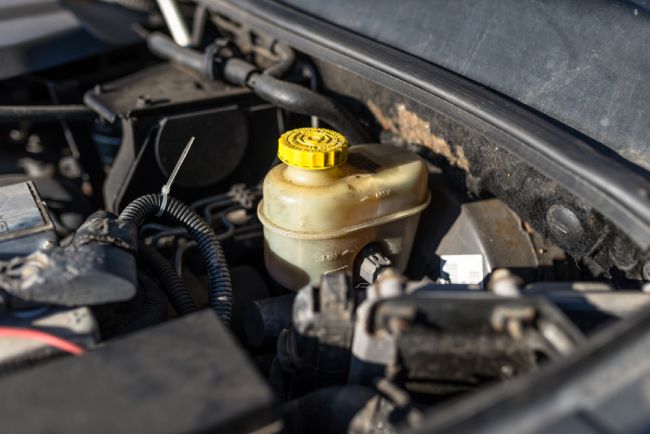
1. Brake fluid leak
You need brake fluid to create hydraulic pressure in the brake cylinder so the vehicle can slow down.
The brake fluid can leak from the cylinders. This will cause the brake fluid level to drop. This can also occur when the reservoirs are not secure.
2. Sinking brake pedal
Apply pressure to the brake pedal. You will feel sponginess, which indicates an issue with the brake master cylinder.
3. Internally leaking master cylinder
It doesn’t matter how much fluid and effort goes into bleeding the brakes. A brake pedal going straight to the floor even when you have bled the brakes is not correct.
If there are no leaks visible, most likely, the cylinder has an internal leak and needs replacing.
4. Contaminated brake fluid
Worn rubber seals can cause contamination of the brake fluid. The seals prevent brake fluid from escaping that in turn prevents debris and dirt from mixing.
5. Air leak in the brake booster diaphragm
It’s common for the brake pedal to feel hard & the footwell to hiss as a result of brake booster air leaks
6. Illuminating brake warning light
The brake warning light on the dashboard is the easiest to spot as the first symptom. This indicates something is wrong with the brake system. However, it isn’t always the brake master cylinder that’s to blame.
How Do You Test a Brake Master Cylinder?
Method 1: In-car test
Step 1: The brake pedal test
Bleed the brake system by pumping the brakes several times and holding. Make sure that the brake pedal feels firm while pumping the brakes.
The pedal may feel spongy, indicating residual air in the brake system or a mechanical issue. Even a sticky brake caliper can state this. Check to see if the brake calipers can move freely by bleeding the system again.
Step 2: Check the brake fluid
A leak in the brake system can cause a slowly dropping brake pedal. If the pedal suddenly drops, you know that one of the internal seals is allowing the pressure to escape.
Step 3: Inspect the master cylinder
There should be no leaks in the master cylinder, no bubbles or swirls in the reservoir. The pedal shouldn’t descend slowly under pressure, otherwise, it’s not working correctly.
Method 2: On-bench test
Step 1: Gather tools
- Bench vice
- Impact screwdriver
- Bleeding kit
Step 2: Secure the master cylinder in a vise
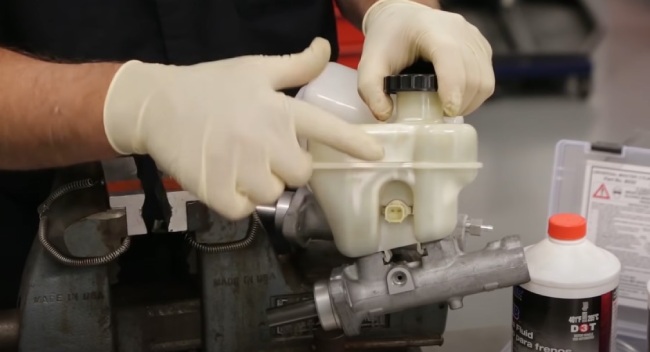
**Photo Courtesy: YouTube
Use a giant screwdriver or impact screwdriver to squeeze the plunger of the cylinder. Having a very strong plunger or one that cannot move indicates a good master cylinder. The master cylinder could have a leak or is faulty. You can tell this if the plunger keeps pushing into the reservoir.
Step 3: Prep with the bleeding kit
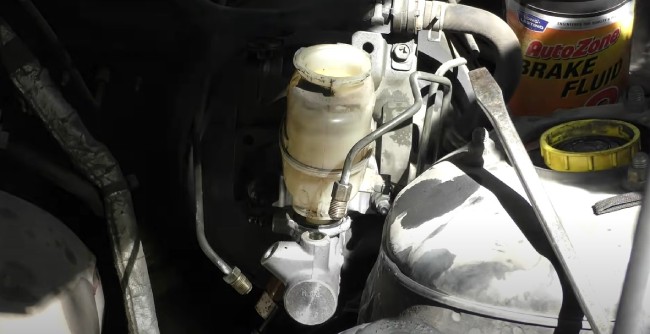
**Photo Courtesy: YouTube
Fill the brake fluid reservoir tank with your new brake fluid. Various brake fluids are available. Consult your owner’s manual if you’re not sure which type is right for your vehicle. Check the reservoir cover to identify the type of fluid.
Step 4: Bleed out the air bubbles with the kit (Or without it)
You can bleed the master cylinder with the bleeding kit included. Now catch the brake fluid by placing the open end of the hoses in a container.
Before you begin bleeding, make sure the reservoir is full. To push in the cylinder, you’ll use a plastic or wooden rod (like your brake pedal does when you drive).
You’re now ready to pump. You better pinch the tubes closed whenever you let the cylinder come back out.
Basically, you will push in, then crimp the lines, release it, let go, push in, and then crimp the lines, and so on. Bubbles will rise to the surface of the reservoir.
Maintain a full reservoir of brake fluid. If the pump runs dry, you will have to restart it.
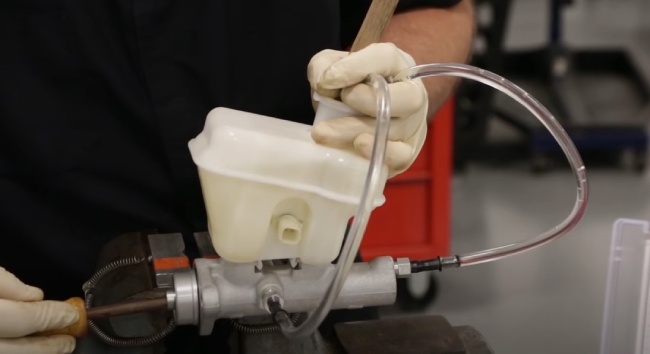
**Photo Courtesy: YouTube
The process is the same if you don’t have a bleeding kit. Instead of pinching the cylinder, your fingers seal the holes, releasing the cylinder. Continue pumping until the reservoir is clear of bubbles.
Step 5: Replace the little caps and screw the top onto the reservoir
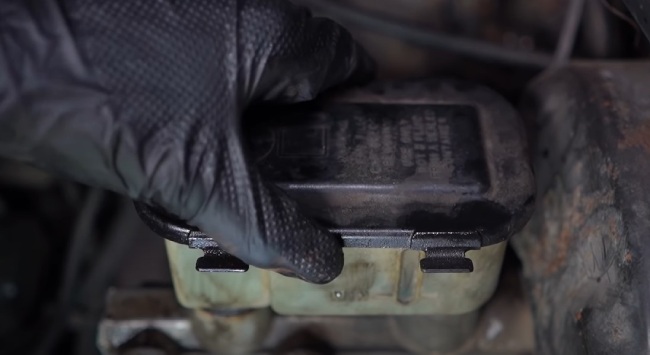
**Photo Courtesy: YouTube
Pump until no bubbles are floating to the top of the reservoir. Replace the cap that came with your master cylinder.
Be careful here, but do not worry if some fluid drips out. Put the reservoir’s top on, and you’re ready to install the new master cylinder.
Why you should fix brake fluid leaks before they cause an accident
Several factors may cause brake failure, but brake fluid leaks are the most common. The pressure in your brake system decreases when a brake leak is present.
When you press the brake pedal, this pressure actually causes the wheels to slow or stop. Once the fluid levels are too low, the brakes will not work.
No matter the size or severity of the brake fluid leak, you need to address it immediately. You won’t get much warning when your brake fluid is leaking.
Leaking brake fluid can have serious consequences. So, checking brake fluid levels is crucial.
FAQs
1. How long do brake master cylinders last?
Ans. Master cylinders are built to last the car’s life, but they often do not last that long. In the master cylinder, some seals can dry out over time and become brittle. If the seals aren’t functioning properly, the master cylinder can leak.


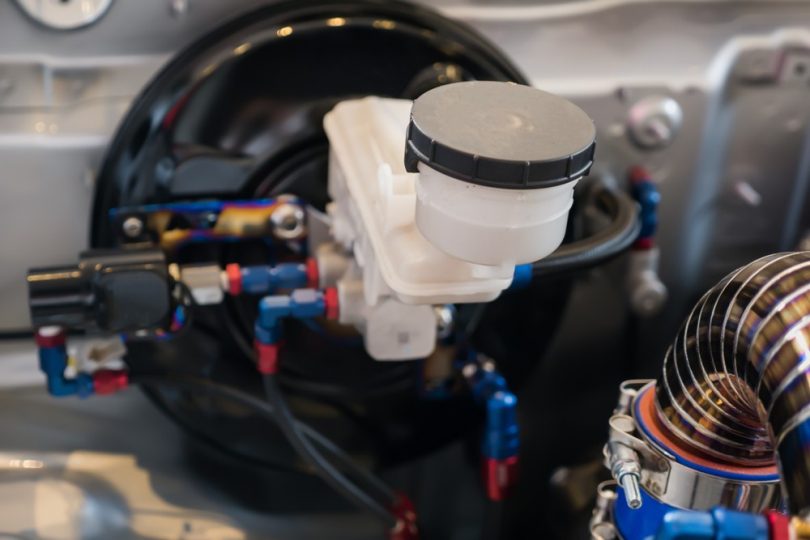
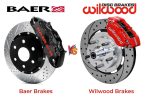
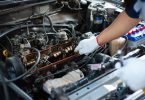



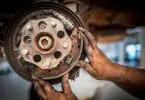

Leave a Comment